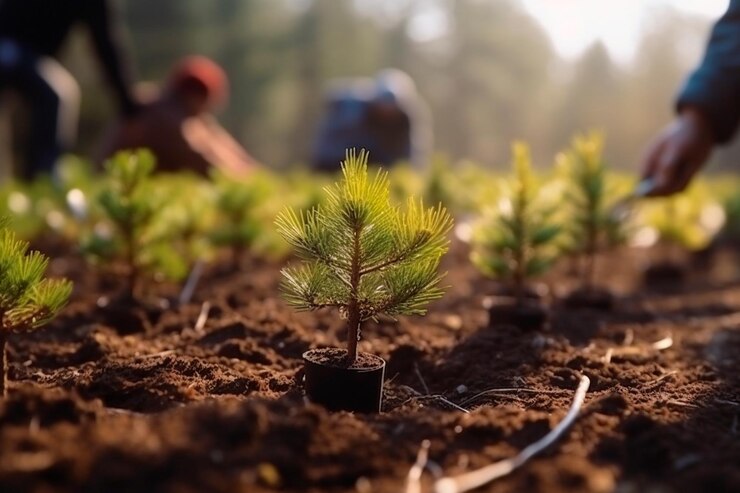Agroforestry plays a crucial role in promoting sustainable farming systems in South Africa. It is an integrated land use management approach that combines trees or woody plants with agricultural crops and/or livestock production on the same piece of land. Here are some key ways in which agroforestry contributes to sustainable farming in South Africa:
- Biodiversity Conservation: Agroforestry systems enhance biodiversity by providing habitats for a variety of plant and animal species. The diverse structure and composition of trees and crops in these systems create ecological niches, supporting a range of organisms, including beneficial insects, birds, and mammals. This helps to maintain a healthy and balanced ecosystem.
- Soil Conservation: Trees in agroforestry systems help prevent soil erosion and degradation. Their roots anchor the soil, reducing the risk of erosion by wind and water. Furthermore, the fallen leaves and organic matter from trees contribute to soil fertility, enhancing nutrient cycling and moisture retention.
- Water Management: Agroforestry systems help regulate water availability and quality. Tree canopies provide shade, reducing evaporation rates and protecting crops and soil from excessive heat. Tree roots improve water infiltration and aquifer recharge, mitigating the risk of water scarcity and enhancing water quality by filtering runoff.
- Climate Change Mitigation: Trees in agroforestry systems sequester carbon dioxide from the atmosphere, thereby mitigating climate change. By integrating trees with agricultural activities, farmers contribute to carbon sequestration and offset their greenhouse gas emissions. This is particularly important in South Africa, where the agricultural sector is a significant contributor to emissions.
- Diversified Income Streams: Agroforestry systems offer farmers additional income opportunities. By integrating tree crops or timber-producing trees, farmers can generate revenue from non-agricultural sources, reducing their dependence on a single crop or livestock. This diversification enhances resilience and economic stability for farming households.
- Nutritional Security: Agroforestry systems can contribute to improved food and nutritional security. By integrating fruit trees, nut trees, or multipurpose trees, farmers can diversify their food production, ensuring a year-round supply of nutritious fruits, nuts, and other edible products. This is particularly important for smallholder farmers and communities with limited access to diverse food sources.
- Renewable Energy: Agroforestry systems can incorporate energy crops such as fast-growing trees or shrubs for biomass production. These can be used as a source of renewable energy, providing alternatives to fossil fuels and reducing dependence on non-renewable resources.
- Livelihood Improvement: Agroforestry systems have the potential to improve rural livelihoods by providing additional sources of income, improving food security, and enhancing resilience to climate change impacts. By diversifying their production systems, farmers can improve their economic well-being and reduce vulnerability to market fluctuations or climate-related shocks.
In conclusion, agroforestry plays a significant role in promoting sustainable farming systems in South Africa. By integrating trees with agricultural activities, farmers can enhance biodiversity, conserve soil and water resources, mitigate climate change, diversify income streams, improve nutrition, and contribute to rural livelihood improvement. Agroforestry provides a holistic and resilient approach to farming that aligns with the principles of sustainability and offers numerous benefits for both the environment and farming communities.
Join 'Farmers Mag' WhatsApp Channel
Get the latest Farming news and tips delivered straight to your WhatsApp
CLICK HERE TO JOIN






